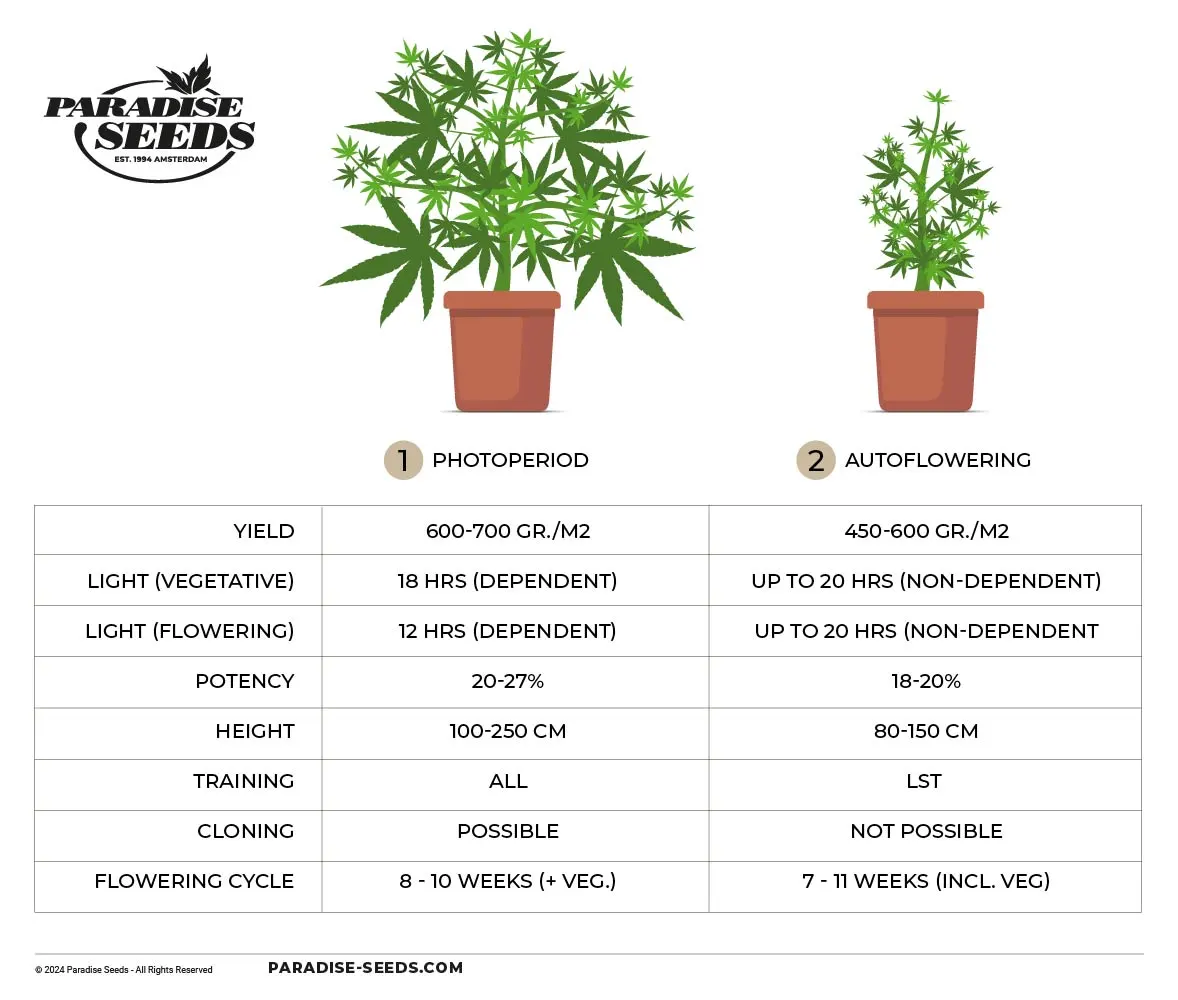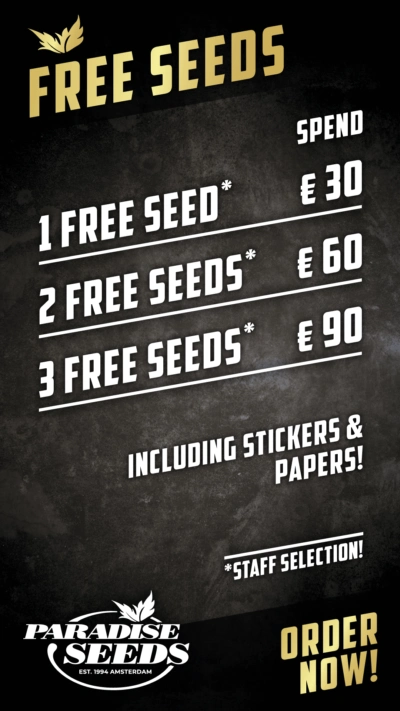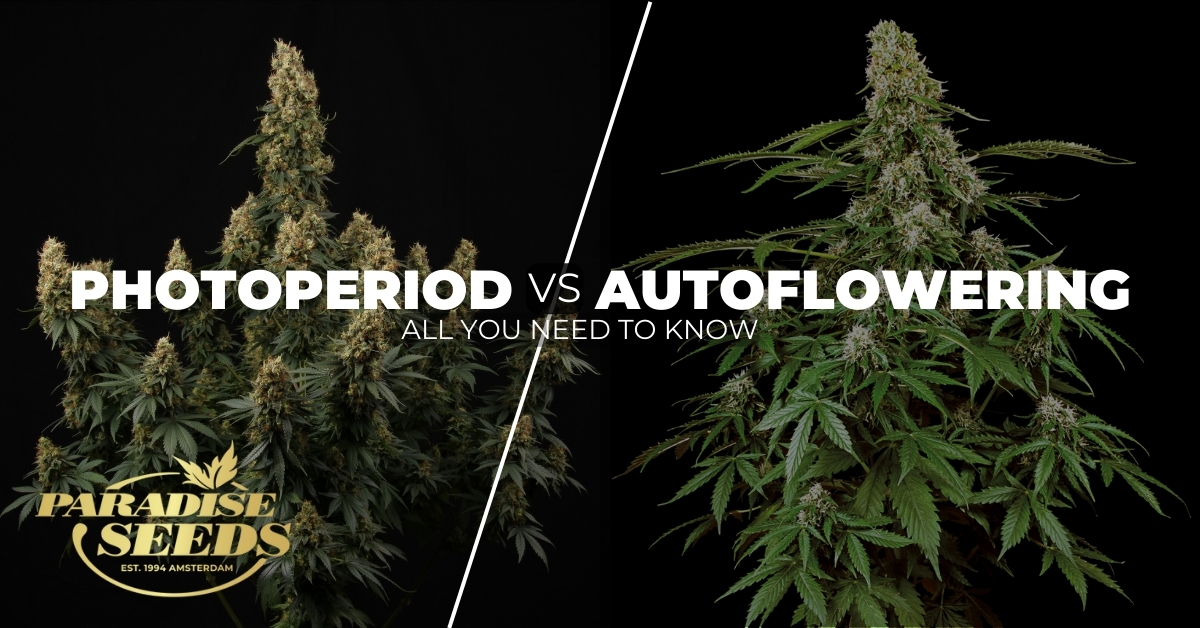The ever-evolving cannabis industry offers growers a crucial decision: should they choose photoperiod or autoflowering seeds? The photoperiod vs autoflower debate among cannabis cultivators is ongoing, based on various factors, each with unique advantages and disadvantages.
The first autoflowering strains were heavily criticized by growers for their lower yields and potential despite being easy to grow and fast developing. However, continuous breeding has significantly improved these varieties.
Therefore, it’s time to revisit this debate and explore the characteristics, benefits, and drawbacks of both photoperiod and autoflowering cannabis strains, helping you make an informed decision for your next growing experience.
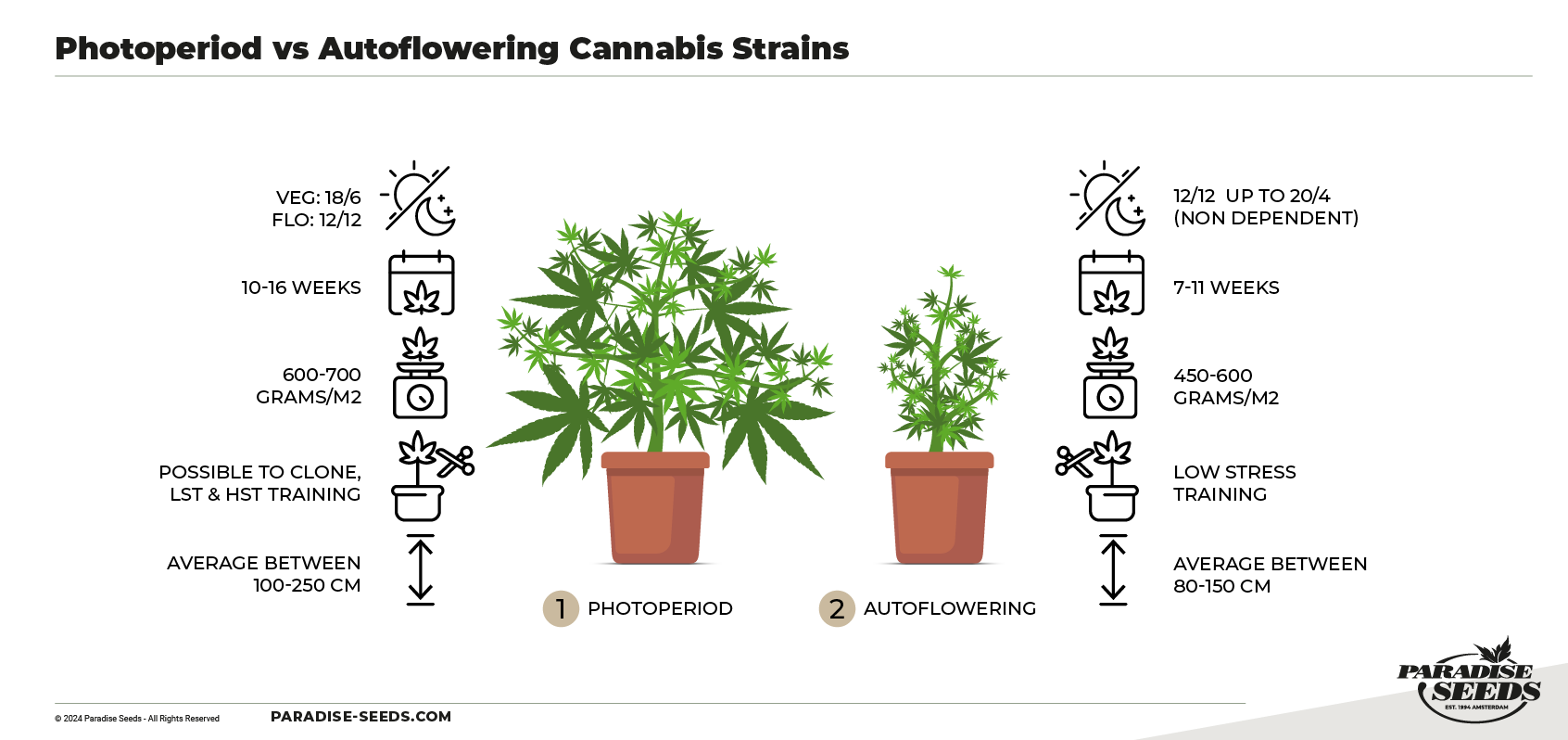
Photoperiod Cannabis Plants
To consider the photoperiod vs autoflower questions, let’s take a look at what the terms mean.
Photoperiodism can be defined in plants as the capacity to detect and adapt to seasonal changes in day length. Most cannabis plants are considered short-day plants, meaning they bloom only when the day is less than 12 hours. Therefore, the photoperiod is a crucial factor for their yields. These plants go through two distinct phases in their life cycle: vegetative growth and flowering.
The vegetative phase occurs when the plants receive approximately 18 hours of daily light and is characterized by the growth of roots, leaves, and branches. Outdoors, the flowering phase and the production of buds begin when the nights exceed a critical photoperiod of 12 hours, typically during late summer in the Northern Hemisphere.
However, the length of the dark period required to induce flowering may vary among different strains and varieties of the cannabis plant.
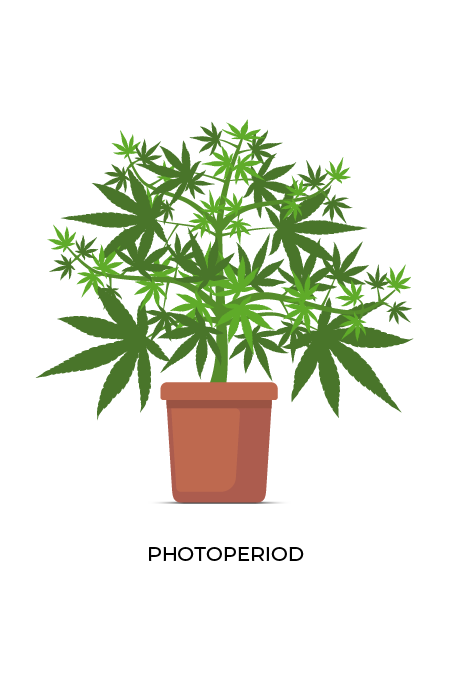
In the past, photoperiod plants took longer to reach full maturity. While many classic photoperiod varieties can still take up to 12-16 weeks to grow (especially sativas), there are now strains that can be harvested in less than ten weeks from seed – check Wappa or Mendocino Skunk, for example.
Photoperiod plants can develop and show their full potential in an ample growing space. These varieties typically grow larger than autoflowers, which also means that they have more bud sites and can support the weight of big yields.
Although autoflowers are starting to catch up, bigger crops are still expected from photoperiods. On average, a high-quality photoperiod plant, such as Caramba produces 600-700 grams/m2, while a high yield autoflower such as Stromboli may yield around 550/grams per square meter. Therefore, you should still consider photoperiod crops if your primary focus is high yields.
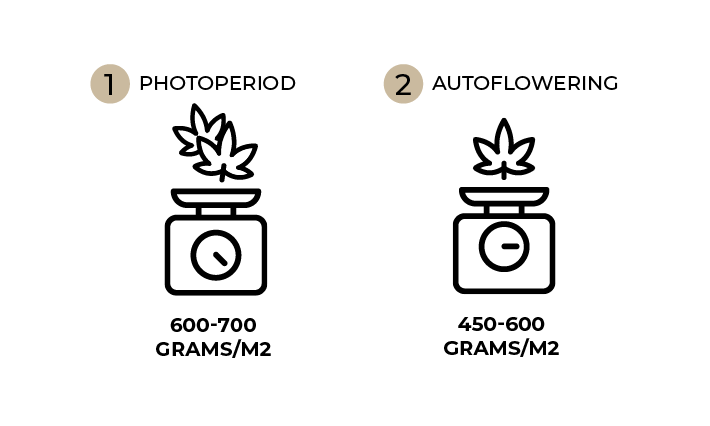
In addition to high yields, potency may tip the scales toward photoperiods for many growers. Although some autoflowers can reach THC levels of up to 20%, the highest potency is still expected from photoperiods, including other cannabinoids.
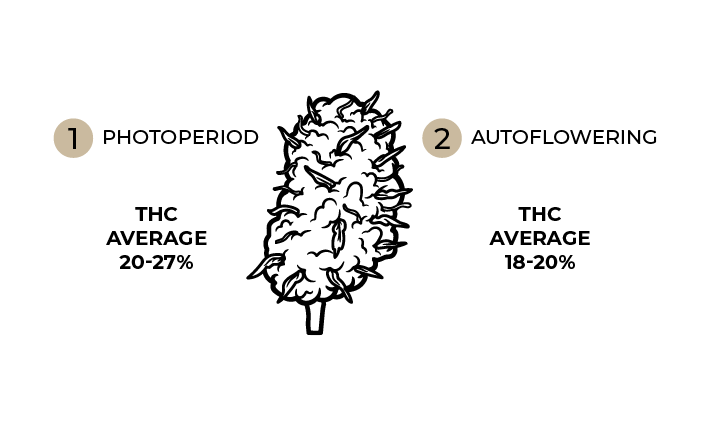
When growing photoperiod seeds, the correct use of light is one of the primary keys to ideal results. After determining the timing of light cycles, it is essential to carefully monitor for “light leaks” before transitioning to a 12/12 lighting schedule. These leaks can disrupt the timing of the lighting schedule and cause stress for your plants. In a worst-case scenario, this stress can result in hermaphroditism. To avoid this, always ensure that there are no light gaps in your grow room or tent.
Indoor photoperiod crops are highly versatile and can be managed efficiently to increase their yield. During the vegetative stage, Low Stress Training (LST) and High Stress Training (HST) techniques can be applied to manage the plant structure. However, these techniques are less effective for autoflowers given the limited time frame of the vegetative stage.
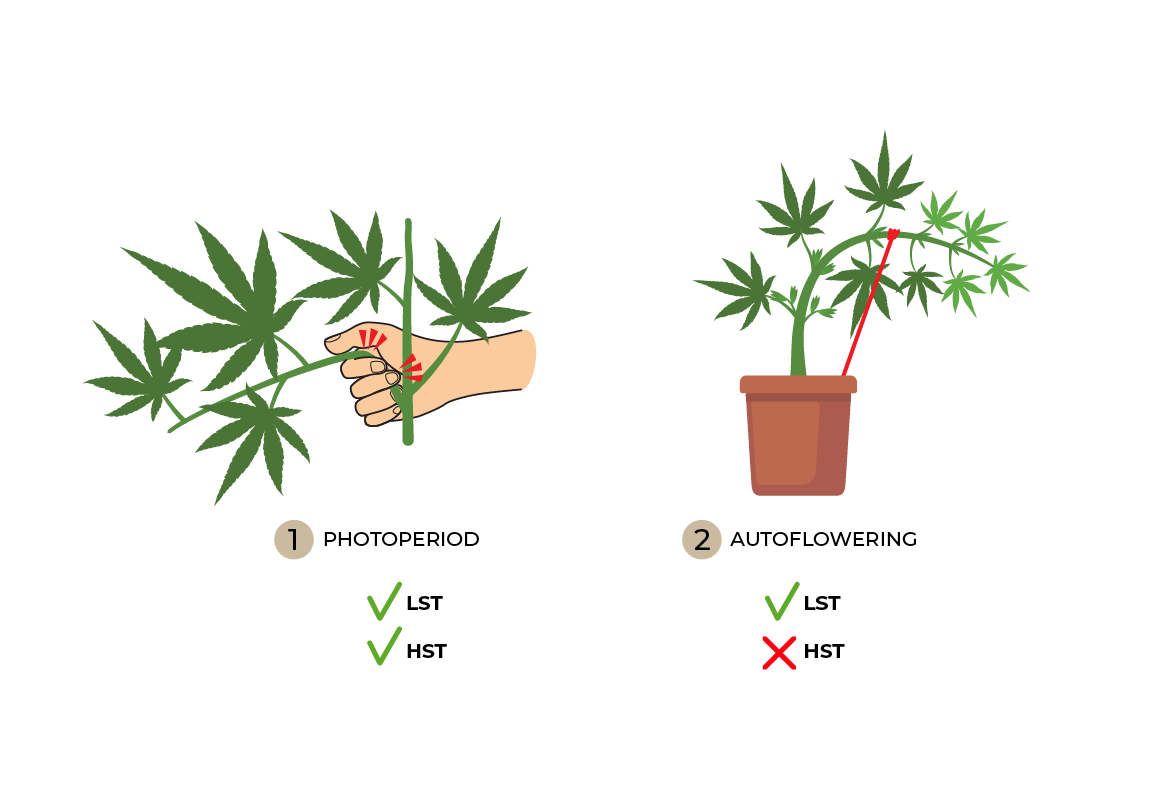
LST involves gently manipulating the branches to encourage horizontal growth and promote even bud development while optimizing light exposure. On the other hand, HST is a more aggressive approach that involves removing parts of the plant to stimulate lateral growth.
Photoperiod varieties have the great advantage of clonability. If one of your specimens combines everything you want from a cannabis plant, you can clone it to enjoy the desirable traits in later plants.
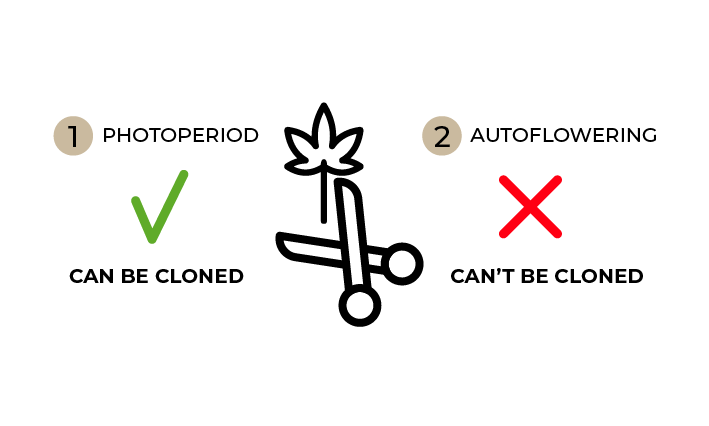
Another method to maintain the genetic line of a photoperiod plant is by using the re-vegging technique. The primary objective of this technique is to return the plant to its vegetative state, which helps produce new growth much faster. This process ensures the continued success of the desired genetics.
Photoperiod vs autoflower cannabis strains pros and cons
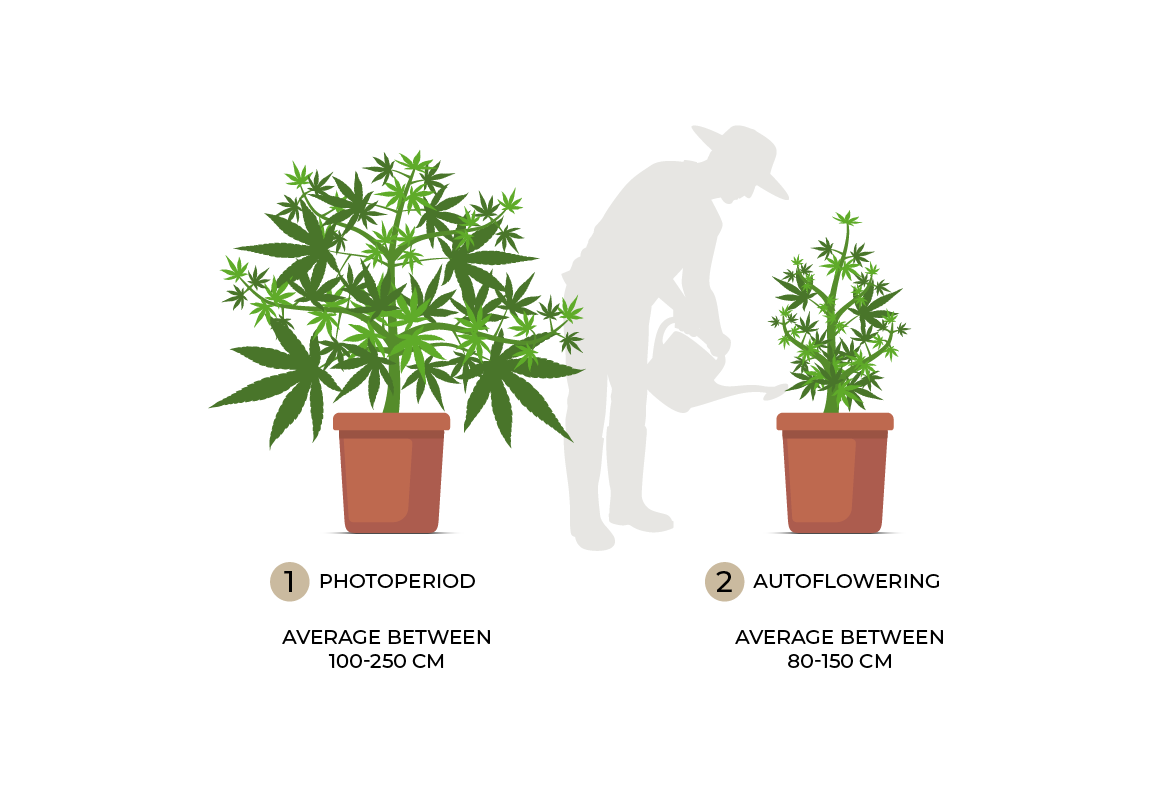
Pros of photoperiods
- Photoperiod strains often produce larger yields, especially when allowed to reach their full potential
- Photoperiod seeds are ideal for cultivators with spacious indoor setups or those cultivating in regions with longer growing seasons
- These plants are easy to breed, can be re-vegged, and are cloneable
- Allows errors made during the vegetative phase to be corrected later
- Training techniques can be applied to increase yield.
Cons of photoperiods
- Longer growth period that requires patience and time from germination to harvest
- Deciding when to enter the flowering phase needs some experience
- Not well-suited for stealth cultivation due to their size and light requirements
- Challenging for outdoor cultivation in regions with shorter growing seasons or colder climates
Autoflowering Cannabis Plants
Autoflower cannabis seeds, on the other hand, bypass the need for specific light cycles and flower automatically after 4-5 weeks of growth. This characteristic offers unique advantages for growers.
Firstly, there is no need to worry about appropriate lighting as the plants will thrive even with only 8-12 hours of light per day. However, providing 16-20 hours of light will result in higher yields. Still, if you plan to grow your plants outside on your balcony to let nature take its course, autoflowering seeds are the way to go.
Autoflowering plants tend to grow faster than photoperiods. Some autoflower strains like Vertigo or Pandora can be harvested just 8-9 weeks after germination. The best thing about autoflowers is that you can grow multiple harvests yearly, even outdoors!
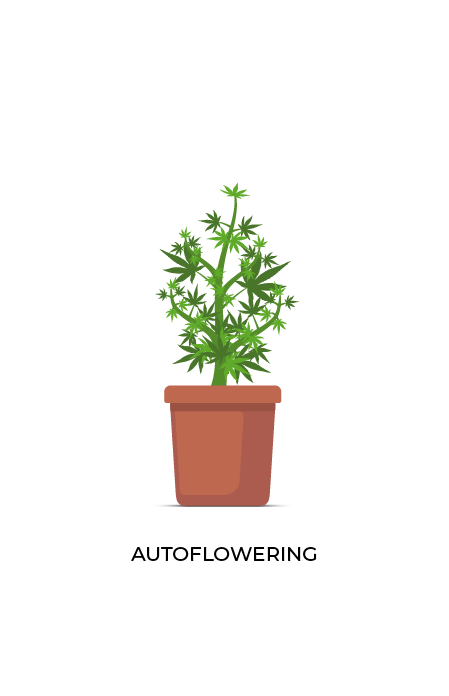
Depending on the strain and weather conditions, you can start growing them outdoors in May. If you grow cannabis in the northern regions with short summers and varied climates, autoflower seeds will be your obvious choice.
Autoflowers are genetically smaller than photoperiod plants, which provides a valuable benefit for most growers. On average, they grow to be around 1-1.5 meters tall. This means that you will require less vertical height in your grow room. Additionally, you can easily hide them from curious onlookers when growing outdoors.
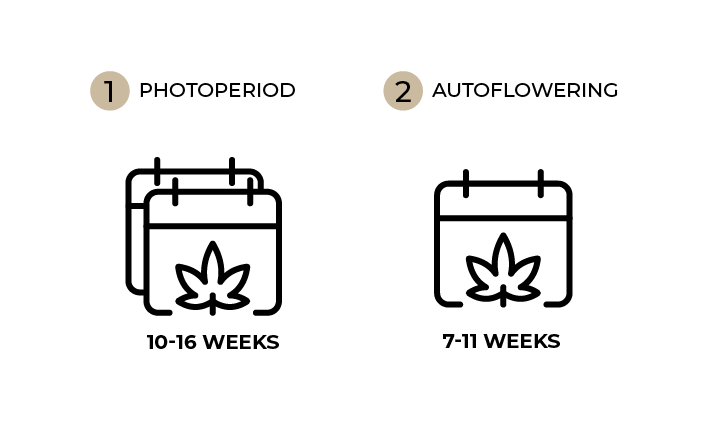
However, growing healthy and potent automatic strains can be challenging due to their short vegetative growth phase. While some believe that growing autoflowering seeds is as easy as taking care of any indoor plant and providing sufficient water and sunlight, it is more complex than it sounds. Ensuring optimal growth during the first few weeks of cultivation is crucial and requires proper care, including moderate temperature, adequate water, and sunlight.
As flowering starts within a few weeks, regardless of growing conditions, mistakes made early on can take their toll. If the plant experiences stress in the first few weeks, it will not have enough time to recover before flowering, resulting in a lower yield.
On the other hand, autoflowers cannot be used for cloning. Technically, it is possible to clone them, but the resulting plant will be the same age as the mother and will start flowering immediately without any meaningful yield. The same applies to re-vegging: autos cannot be reverted to an earlier growth phase due to their internal clock.
Autoflowering plants have the advantage of not requiring changes in light cycles. However, if you want to see spectacular results in a short period, this can also be a disadvantage.
The minimum recommended light cycle is 12/12, but for the best results, 16-20 hours of light per day is suggested, which can strain your wallet. However, the high energy consumption can be offset by autoflowers being ready to harvest faster than photoperiod crops.
Pros of autoflowers
- Exceptional speed, with some strains ready for harvest in as little as 7-9 weeks
- Well-suited for growers seeking a quick turnaround
- They can grow in various environments, and light leaks do not negatively impact their growth
- Their compact size makes them ideal for discreet indoor or guerrilla outdoor cultivation
Cons of autoflowers
- Somewhat smaller yields and lower potency compared to photoperiod strains
- Limited time for recovery from early stress, making precise care crucial
- Not suitable for cloning and High Stress Training Techniques due to their internal genetic clock
- For optimal growth, plants require 16-20 hours of daily light, resulting in high energy consumption
Do autoflowers occur in nature?
Though autoflowering genetics are inherited from nature, they are not initially a feature of sativas and indicas. Some growers have avoided autoflowers because their genetics are considered to be different from classic cannabis, leading some to believe that they could never be as good as the original. To disprove this image, it’s worth taking a look at the history of autos.
In the past, some cannabis seeds migrated from Central Asia to Russia and Siberia, close to the Arctic Circle, where summers are shorter and colder. However, the photoperiod plants that relied on seasonal changes in sunlight exposure struggled to mature in time due to the harsh environment. The plants that survived adapted and developed genetic mutations, which allowed them to flower quicker and earlier when they reached a certain age, regardless of the number of sunny hours they received. This cannabis species is known as ruderalis. In the early 21st century, breeders combined ruderalis genes with indica and sativa plants to create the first commercially available autoflowering seeds.
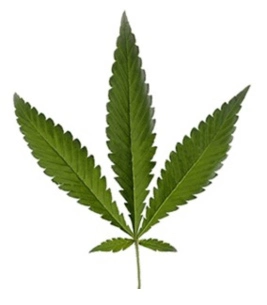
Through two decades of selective breeding, early low-yielding and low-potency autoflowering plants have become almost as productive as photoperiod strains. In terms of cannabinoid profile, they have also caught up firmly with their indica and sativa ancestors.
Many of the top-selling cannabis strains are the result of combining desirable qualities. Just like how we consider cross-bred fruits like Jonagold apples natural, the same applies to autoflower varieties with ruderalis and sativa/indica ancestors.
Conclusion
In the dynamic landscape of cannabis cultivation, it is inevitable that the photoperiod vs autoflower cannabis strains discussion endures. However, as this article shows, each has its distinct merits. The continuous advancements in autoflowering seeds have disrupted the traditional debate, offering growers unique advantages such as speed, adaptability, and multiple harvests.
While photoperiod strains boast clonability and potential for larger yields, the ongoing popularity of autoflower strains suggests a growing acceptance among cultivators for their ability to combine desirable traits. Still, if you’re primarily motivated by high yield and outstanding potency, usually a photoperiod strain is a better choice.
Ultimately, deciding between photoperiod and autoflowering seeds depends on individual preferences, cultivation goals, and environmental considerations. Whether opting for the clonability and potentially larger yields of photoperiods or the speed and adaptability of autoflowers, growers now have diverse options to suit their specific needs and circumstances.
